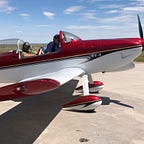The Battle of the Somme — Part 3
The Big Push
July 1st 1916 was the date selected by General Haig to launch his ‘big push’ and break through the German lines. To this end there had been continuous shelling of the German trenches for a week. Haig was assured that this unprecedented bombardment would have killed most of the German defenders and demoralized those who remained alive. The General Staff expected it be a ‘walk in the park’ and ordered the infantry to carry many days of supplies with them, to ensure that the advance could continue. Each infantryman was laden with up to 75lbs (35kg) of supplies, ammunition, and equipment, an absurd load to carry into battle.
The reality was very different. Yes, the Germans were cowering in their dugouts[i], scared, and expecting the worst. But they had deep bunkers, built into the chalk hillside, reinforced with timber and concrete. With typical Teutonic preparedness they had been practicing for exactly such an advance and were ready to scramble up, bringing their weapons with them to replet the attack.
Dawn breaks
Sunrise on July 1st was at 3:49 am, according to Richard’s war diary. (Daylight Saving Time had been introduced on May 21st 1916[ii] but it only applied to civilians.) H-Hour, when the offensive would be launched, was set for 7:30 am. Rudra[iii] recalls: ‘Early on the morning we were made to line up along the parapet . . . . I remember it was a beautiful summer’s day and I wondered how it would end.
